Oxygen, known in Russia as "rabbit cabbage", and in Europe under the name "happiness clover", is a spectacular plant whose violet-burgundy foliage, collected in a lush bush, can revive any interior. In Western Europe, it is customary to give a plant for the New Year, which is associated with the omen that the flower will bring happiness and prosperity to the house if it becomes its inhabitant on the last day of the outgoing year. Among floriculturists, indoor sour acid has become widespread due to its unpretentiousness in care, combined with high decorative qualities.
Material Content:
Types and varieties of plants
The genus Oxalis Oxalis unites more than 800 species that grow on different continents - in Africa, both Americas and Europe.

As a pot culture, the two most popular are:
- Triangular acid, it is also violet indoor acid - a stunted plant with tuberous rhizome, distinguished by tri-lobed leaf plates, painted in dark burgundy, which are located on long petioles. During flowering, you can see white, pink or lilac flowers of small sizes.
- Four-leaf sour, also known as Depp sour, is a species with a four-piece structure of leaf plates, which are painted in light green at the top and burgundy at the base.The flowering phase lasts a long period, during which the gardener can enjoy fragrant raspberry flowers. According to the British, it is this variety that brings harmony and happiness to the house.
Indoor Sour - Growing Features
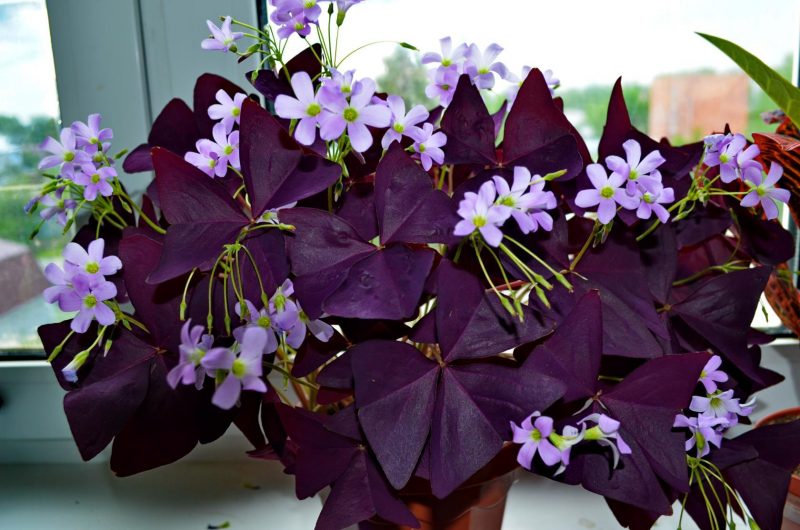
Kislitsa, like other cultures, has its own characteristics:
- root system - tuberous or bulbous, depending on the species;
- leaf plates - fold in the evening and open at sunrise;
- flowers - like leaves, close in the evening or before rain;
- seeds - when ripe, the capsule explodes easily from touch.
Home Care
Growing acid on the windowsill will not cause the grower trouble if you follow fairly simple care requirements.
Lighting and location
As in the natural habitat, an acidic squirrel needs a large amount of diffused light. The best solution would be to place the pot near southeast or southwest windows with easy shading from direct sunlight. If possible, then in the summer, the culture lands in open ground, protected from scorching sunlight and drafts.

Advice! When placing the pot on the windowsills of the windows of the northern direction, an artificial light source should be organized.
Temperature mode

To ensure flowering, it is necessary to provide the following temperatures to acid:
- During the growing season, which lasts from spring to mid-autumn, the temperature can vary between 20-25 ° C.
- In the resting phase (in winter), the temperature regime decreases by 7 °.
Soil requirements
Oxygen is not particularly demanding on the composition of the soil. For its cultivation, you can use the universal soil mixture from a flower shop or independently prepared.
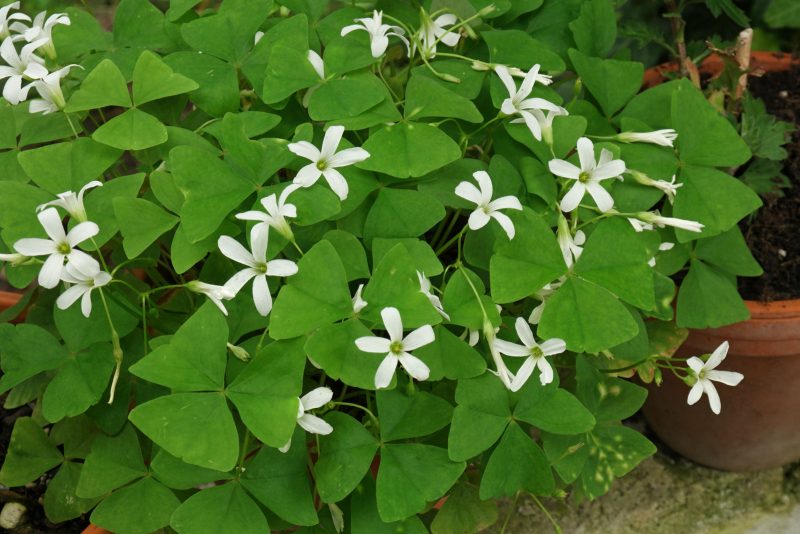
To prepare the substrate yourself, mix:
- sand;
- peat;
- leaf and turf soils in equal amounts.
Attention! The substrate does not have to be very fertile. With a high content of nutrients, the development of greenery will occur to the detriment of flowering.
Watering and humidity
The flower needs regular and moderate watering so that the earthen lump always remains slightly moist. However, water stagnation, which provokes root decay, cannot be allowed. Oxygen is easily adapted to dry room air, but if the plant is excessively dry, it is worth periodically spraying it. To moisten the potted culture, it is recommended to use boiled or filtered water.
Fertilizer and fertilizer
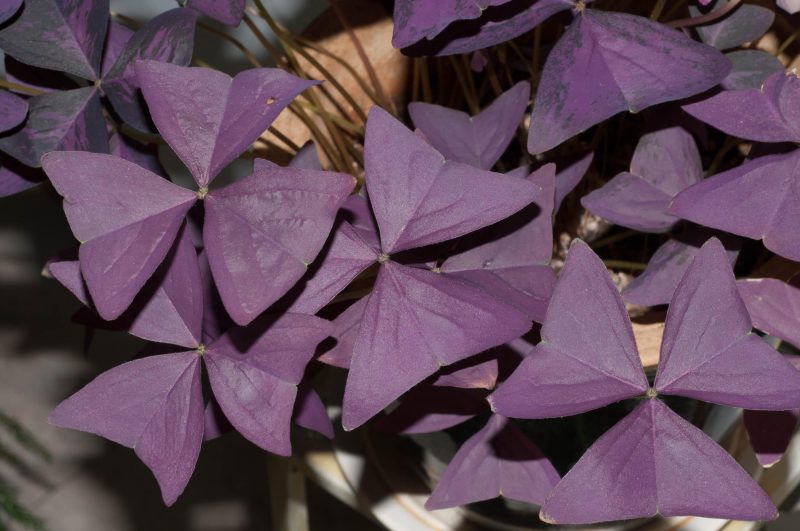
An integral component of comprehensive care are systematic top dressing, which are carried out with liquid complex mineral fertilizers with an interval of 2-3 weeks:
- after awakening, the plant is fed with complexes with a low nitrogen content;
- Before budding and during flowering, only phosphorus-potassium fertilizers are selected for dressing.
Important! Fertilizers are applied with a concentration of half as much as indicated on the package.
Plant transplant
Young specimens are transplanted annually, but as they grow, the time interval between the procedures increases to three years.

Transplantation is carried out according to the following scheme:
- A wide pot is selected, where several tubers or bulbs are planted to obtain a dense, luxurious flower.
- A drainage layer is placed at the bottom of the pot.
- The flower carefully, together with an earthen lump, is transferred to the prepared container.
- The remaining voids are filled with special soil, which is compacted after completion of work.
Rest period
From mid-autumn, the bush begins to prepare for the dormant phase - watering and feeding are reduced. With the advent of winter colds, the temperature drops to 12-18 ° C, top dressing is stopped, and humidification is carried out in meager portions to prevent the soil from completely drying out. Spraying acid to increase humidity during dormancy should not be.
Pest and disease control
Oxygen is considered a plant resistant to damage by harmful organisms. But due to violations of the basic requirements for care, the culture can be attacked by a spider mite, aphids and scabies, to combat which an insecticide is sprayed. In case of strong occupation, treatment is repeated at the end of the toxicity period, which is usually not more than 14 days.

Among the diseases that can develop with systematic overflows or the absence of a drainage layer, rot and fusarium are noted. Such fungal diseases can be treated with fungicidal drugs only at the initial stage of development. With the neglected form, diseased plants cannot be cured, so it is necessary to carry out preventive measures, avoiding such a scenario.
Propagation of Sour
In a room environment, acid can be propagated both by seed and vegetatively, which is the most popular.
Shift reproduction
If in the wild this is the only way of reproduction, then at home they resort to it extremely rarely.
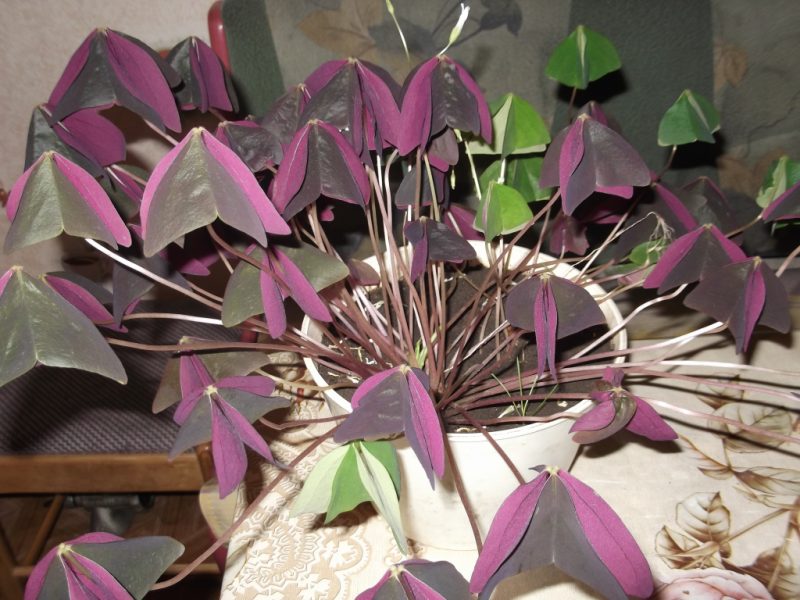
In the event that the florist is still not afraid of the hassle and duration of the process, he should use the instructions below:
- In early spring, a substrate is prepared from compost, peat and sand in a ratio of 4: 4: 1, which is placed in a container for seedlings.
- Seeds are distributed over the surface of the soil and covered with glass to create greenhouse conditions with high humidity.
- The tank moves to a cool room with good lighting, where the glass is periodically removed for ventilation and humidification of crops from the spray gun.
Bulb Division
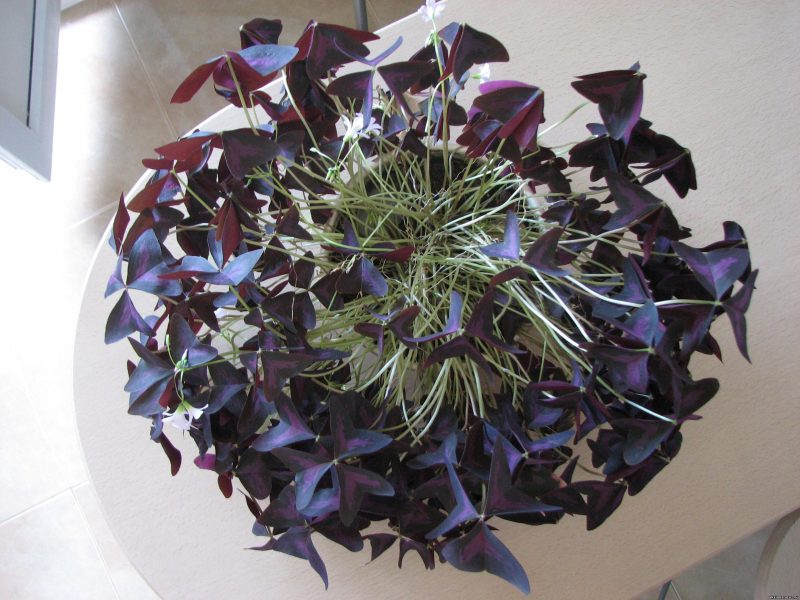
After awakening, plants are propagated by dividing the bulbs, in which:
- After the formation of the first leaf, the tuber (bulb) is removed from the pot and cleaned of soil.
- The prepared part of the plant is immersed in a solution of manganese for disinfection, after which it is divided into equal parts.
- The cut sites are treated with an antiseptic and the separated parts are planted in separate containers.
- Pots move to a bright, cool place where the delenki are moistened and fed with liquid fertilizers every two weeks.
Reproduction by children
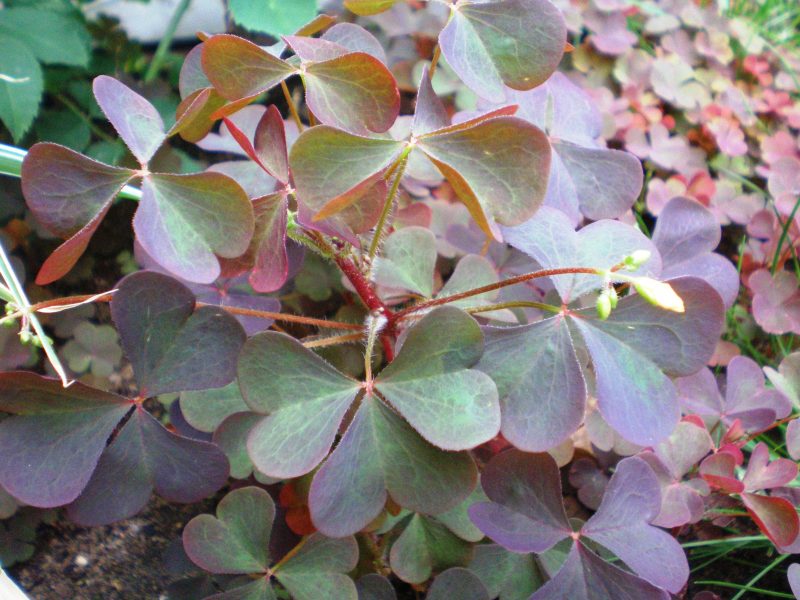
Dilution of acid with the help of children is as follows:
- During the transplant, the children are separated from the mother's bulb or the root root (in the case of a tuber) with a sharp tool.
- Children land in individual containers, several pieces in one.
- Plantings are sprinkled with soil, which is abundantly moistened.
- Pots are placed in a bright, cool room, where they are until completely rooted.
- After 3 months, the flower grower will become the owner of a lush bush.
Thus, subject to simple rules, you will become the owner of a spectacular, lush bush, pleasing flowering and pleasant aroma for a long period of time.












